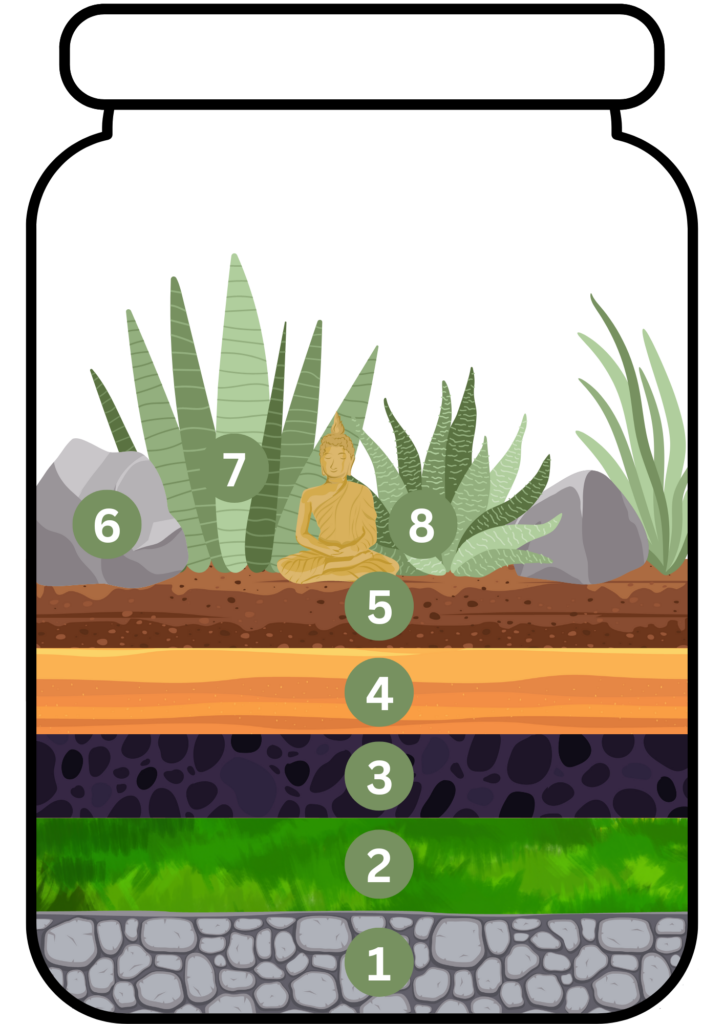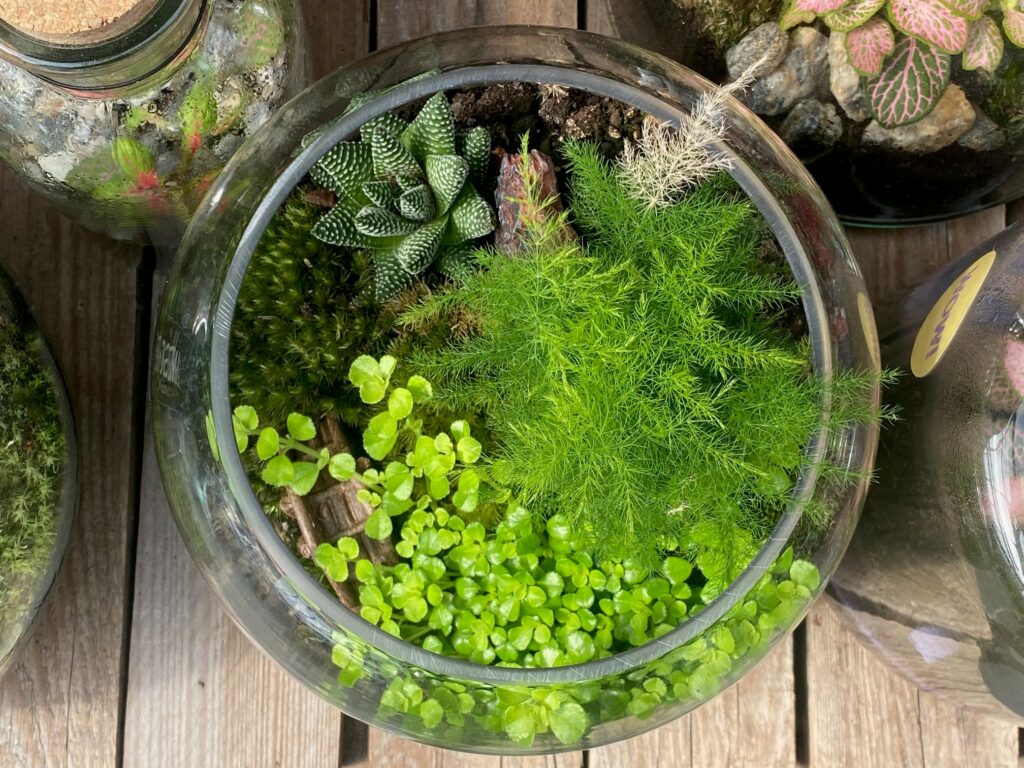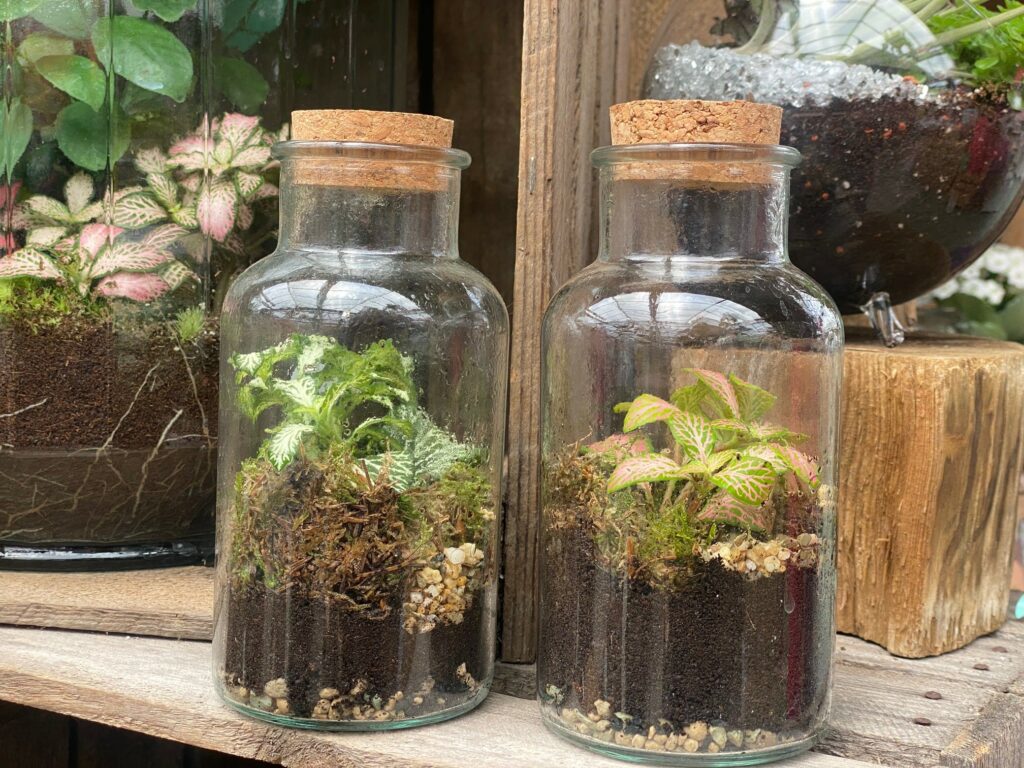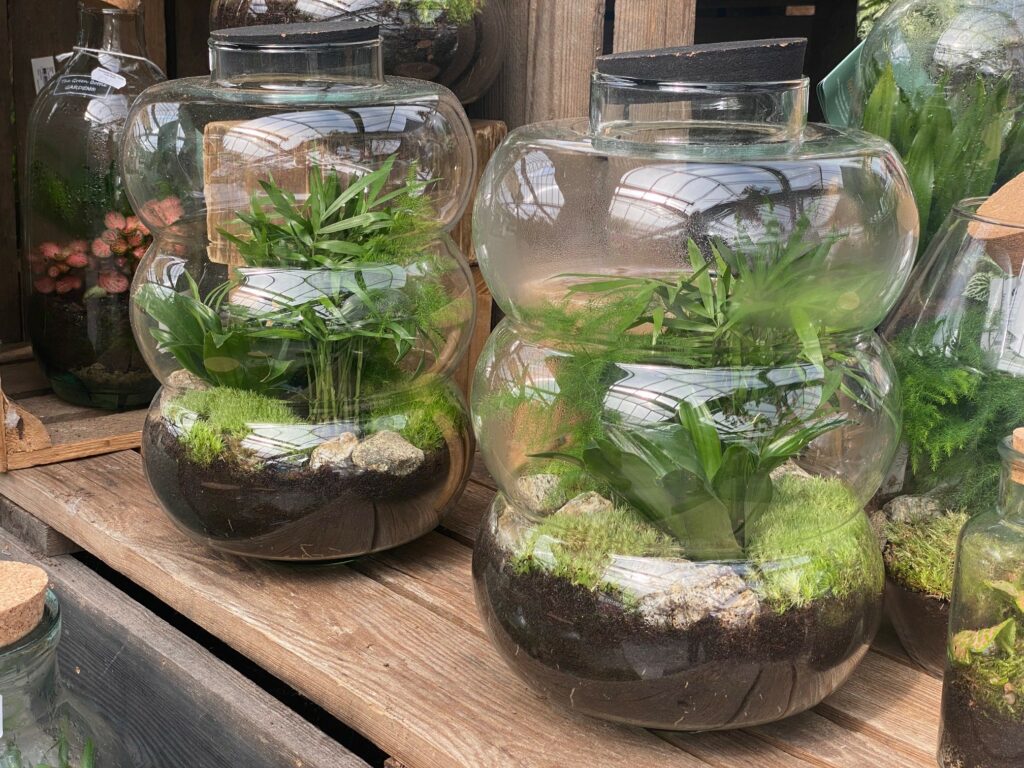Terrariums, which are tiny gardens planted in containers, are not only decorative but also provide therapeutic benefits; our guide to terrariums will provide you with all the necessary information to help you create your own soothing miniature garden.
Types Of Terrarium
You have two types of terrariums to select for planting. The key distinction between them is that one is closed while the other is open. Various plants thrive better in each type based on their specific growing requirements. It’s recommended to populate your mini garden with plants that share similar preferences.
Closed Wet Terrarium
Terrariums of this type are sealed with a lid/cork. The plants and soil release water vapour that condenses on the walls of the container and then drips back into the soil, creating a water recycling system. These terrariums are self-sustaining and therefore require little maintenance. Typically, plants that thrive in humid conditions are chosen for these terrariums – plants such as ferns and mosses. This kind of terrarium offers the most diverse range of plants that you can use.
Open Dry Terrarium
This type of terrarium features an open side, giving the plants inside access to fresh air. Open terrariums are ideal for plants that like drier conditions such as cacti and succulents. Due to the open side, there is no self-sustaining water cycle, however, they are still easy-maintenance as cacti and succulents require little water. If your terrarium is very open, you can simply place houseplants that you’d have around the house in there also as they will be exposed to the same conditions.
Our Terrarium guide will tell you which plants are appropriate for each terrarium, as well as how to properly set it up to ensure success!


Plants For Closed Wet Terrariums
Plants For Open Dry Terrariums
How To Layer Your Closed Wet Terrarium
1. Drainage Layer: This provides support and allows space for excess water to drain into, eventually evaporating and continuing the water cycle. You can use leca balls or lava rock to create this layer as they can absorb lots of water and boost humidity.
2. Barrier Layer: You’ll need a barrier to separate your drainage and substrate layers. Without this layer your plants’ roots will grow into the drainage layer and this will lead to root rot. To create a barrier you can either use a thick layer of sphagnum moss or some mesh that will not rust.
3. Activated Charcoal: Filtration will prevent mold, and you can use activated charcoal to purify the water.
4. Decorative Sand (optional): You can create a lot of interest within your terrarium by experimenting with coloured, decorative sands.

5. Substrate/Soil: The soil you use all depends on the plants you have chosen. Your plants need good drainage, water retention, and aeration, so you should use a tropical plant mix with orchid bark incorporated into it. This layer needs to be thick enough to leave room for future growth.
6. Hardscape (optional): This layer is for decorative rocks, branches, pebbles etc. It is not an essential layer but it’s great for adding visual interest, and depth.
7. Plants: Start with your large, focal plants so you can arrange your smaller plants to accentuate it. Once all your plants are placed, you can then use moss to fill in the gaps.
8. Decorations (optional): Try incorporating decorative stones, shells, or even figurines into your display – just make sure to use decor that won’t rot away over time and disrupt your terrarium.


How To Layer Your Open Dry Terrarium
Drainage Layer: You will still need a drainage layer to prevent root rot. Again, you can use leca balls or lava rock.
Activated Charcoal: This layer is essential for preventing toxins that may build up on your terrarium.
Decorative Sand (optional): A great way to enhance the look of your terrarium, especially with coloured sands.
Soil: Arid plants need a gritty, succulent & cacti mix that includes sand or pumice.
Hardscape (optional): Again, this is mainly to add visual interest, and more depth to your terrarium. You can use rocks, pebbles, crystals etc.
Plants: Fill your open dry terrarium with cacti, succulents, and air plants.
Decorations: Use decor that won’t disrupt your terrarium such as stones, shells or miniature figurines.
Open terrariums do not need to hold moisture so you won’t need to use a water-retentive substrate.
Caring For Your Terrarium
Lighting
Your terrarium will need a location that receives indirect sunlight. It’s important to remember that different plants have varying light requirements, therefore, you should choose plants that have similar needs.
Watering
Never pour water into your terrarium, instead you should use a misting bottle as only a little is required for both types of terrarium.
Location
Avoid placing your terrarium near radiators near radiators or other heat sources as this will cause overheating.
Pruning
Overgrown plants can be pruned, or replaced. It’s not recommended to prune over the winter months, most plants prefer to be pruned during spring and summer.
Maintenance
Trim or remove any dead or yellowing leaves. Leaves that are pressed against the glass are likely to become damp and rot, so it’s best to also remove these. If you have a closed terrarium open the lid periodically for ventilation.


If you found our guide to terrariums useful and are looking for more houseplant advice, click here to discover our houseplant care guides.